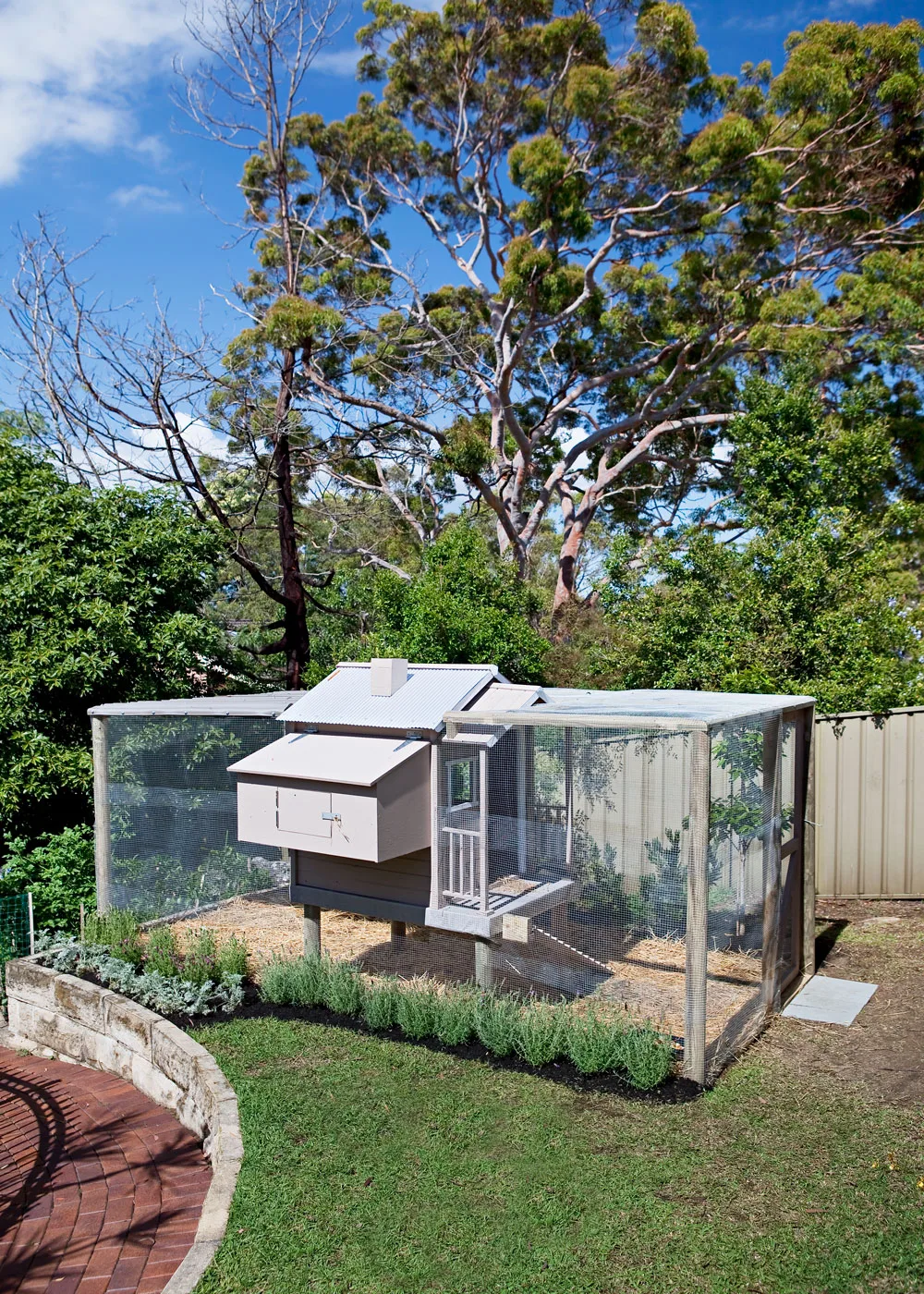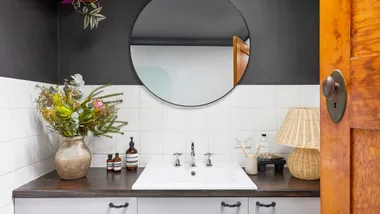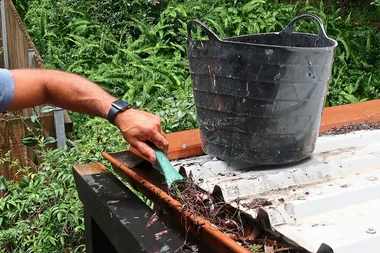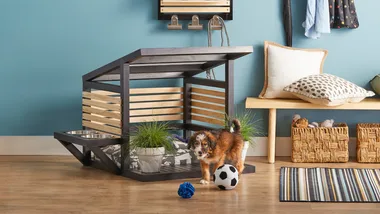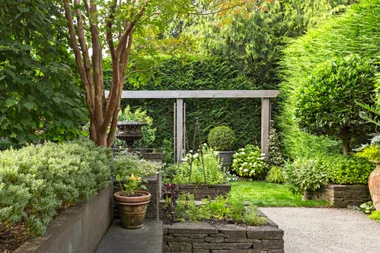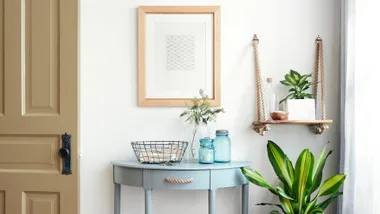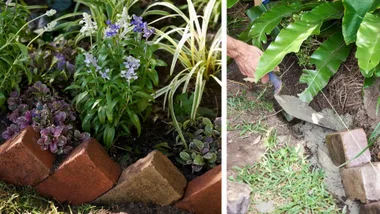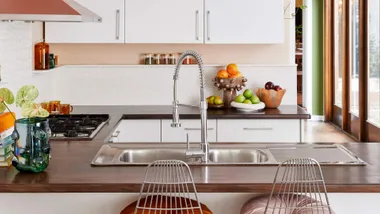Keeping chickens is everything it’s cracked up to be! They provide fresh eggs almost daily, make excellent pets, and their droppings make a great fertiliser for the garden.
WATCH: How to keep pet chickens healthy and happy with Dr Harry
Before you start learning all about your new pet chickens, pick up a few essentials so they can settle in nicely.
Give them somewhere to rest, while also keeping them away from your energetic dog, with a chicken coop. Though you can buy coops from most hardware stores, where’s the fun in that?
Try making your own from an existing cubby – it may be too small for your kids, but it’s just right for chooks! If you don’t have one, check classifieds or council clean-ups. So shake a tail feather and get to it!
Gather your supplies
- Cubbyhouse (here, about 1500 x 1500mm)
- Posts 100mm-dia. x 2400mm H4 treated pine logs
- Platform 17mm plywood
- Platform frame 70 x 45 x 2400mm treated pine
- Platform posts 100mm-dia. x 2400mm H4 treated pine logs
- Nesting box 17mm plywood
- Roof framing 100 x 2400mm treated pine wing splits
- Gate frame 70 x 35mm treated pine
- Ramp 17mm plywood
You’ll also need
Cordless drill; circular saw; 50mm treated pine screws; 100mm bugle head screws; post-hole digger; silicone; vinyl; staple gun and staples; Mini Orb roof sheets; Dulux Weathershield low sheen Acrylic; 50mm hinges; 90mm hasp and staple; 200mm galvanised T-hinges; wire aviary mesh; 25mm clouts; gate latch and spring coil; polycarbonate roofing; polycarbonate roofing screws; block capping; 60mmdia. hardwood branch or 50 x 50mm hardwood stake; straw; snips; pliers; set-out paint
Here’s how
Step 1
Using set-out paint, mark out area for run, allowing 2m squared per bird you intend to keep. Mark positions of posts, with 1 post in each corner and set equally along sides no further than 2m apart. Mark 850mm in from 1 corner for gate post.
Step 2
Dig a 300 x 300mm trench around perimeter. Using post-hole digger, make 600mmdeep holes. This will give a comfortable height of 1.8m for your chook run. Set posts in holes, plumb using a spirit level, then backfill and compact soil. Run a stringline between corners to keep posts in line.
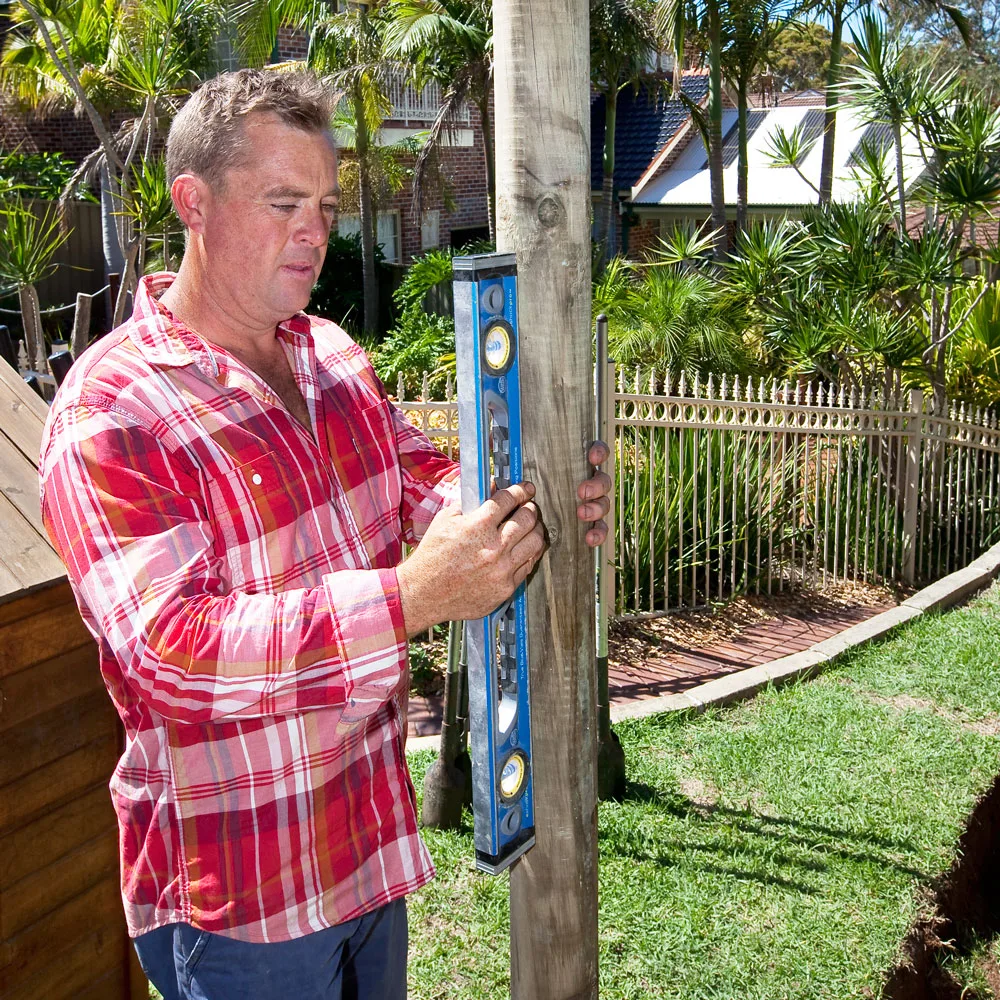
Step 3
Measure cubby and cut platform and platform frame to length. Screw platform frame together using bugle head screws. Screw platform to frame using 50mm screws.
Step 4
The platform needs to be high enough off the ground for chickens to walk under. Add 300mm to desired height to sink into soil. Measure and cut 4 platform posts (here, 800mm) and join to frame using bugle head screws. Using post-hole digger, make 300mmdeep holes for platform posts,lining 1 side up with 1 side of run. Place posts in holes, check level both ways, then backfill.
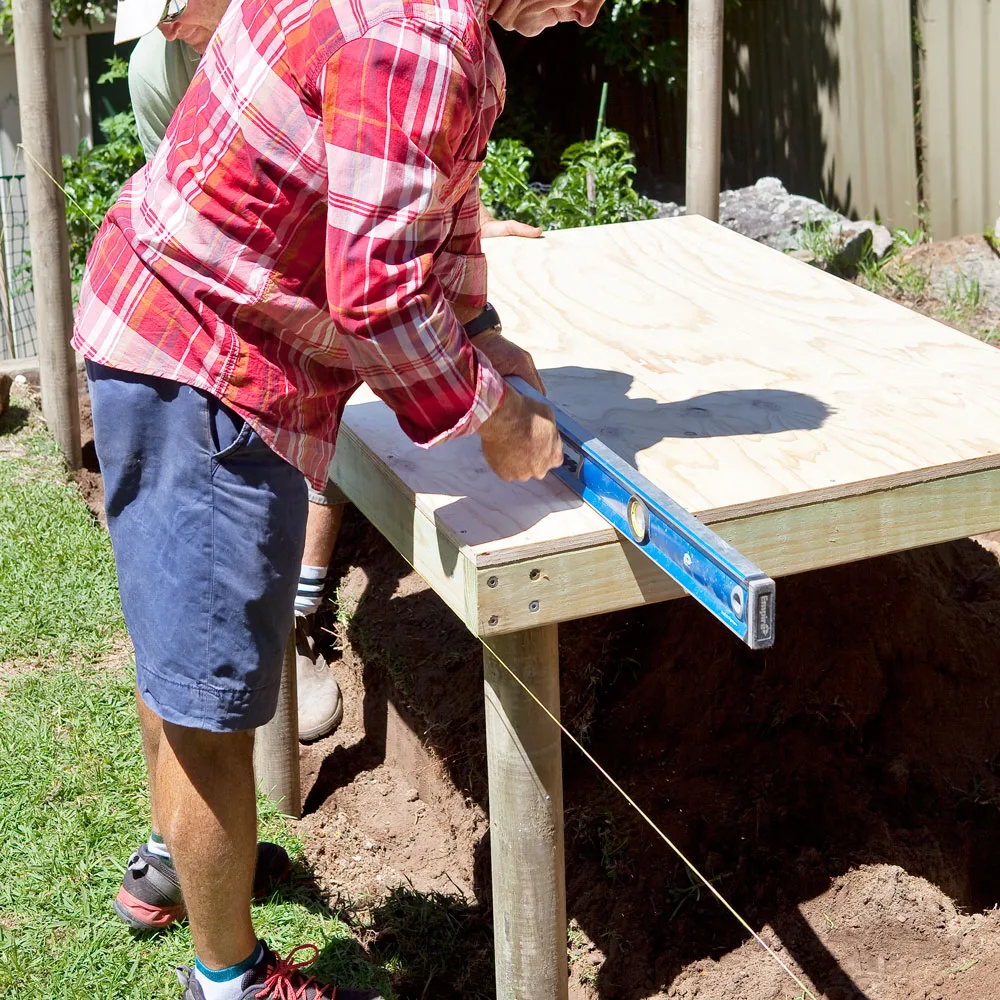
Step 5
Measure platform and cut vinyl to size using a utility knife. Spread silicone over platform and lay vinyl on top. Use an offcut block to smooth out any air bubbles. Neatly fold vinyl under platform frame, trimming if needed, then staple.

Step 6
Remove ridge capping from roof of cubby. Cut Mini Orb sheets to length and screw into existing roof. Use silicone to fill any holes where rain might enter. Replace capping using longer screws, if required. Inside cubby, position branch or stake at least 500mm off ground and secure with screws. This provides hens with a spot to perch and sleep. Allow for 250mm of space per bird (attach additional roosts if needed). Position cubby on platform.

Step 7
Apply 2 coats of Dulux Weathershield low sheen Acrylic (here, cubby is in Zinc Blend with Vivid White on trim around doors, windows and roof), allowing to dry between coats.
Step 8
Measure side of cubby, then mark and cut out nesting box. So lid of box slopes, cut front of box 150mm lower than back and angle sides to suit. Cut lid so it overhangs the box. Cut a hole in back of box to match cubby window. Mark out a door in front of box. Carefully cut out door by lifting saw guard on circular saw and plunging saw down on line. Finish off corners using a sharp hand saw. Screw box together using 50mm screws.

Step 9
Attach nesting box to cubby by screwing into wall studs. Using 50mm hinges, join door to box. Add hasp and staple to secure door. Attach lid to the cubby using T-hinges.
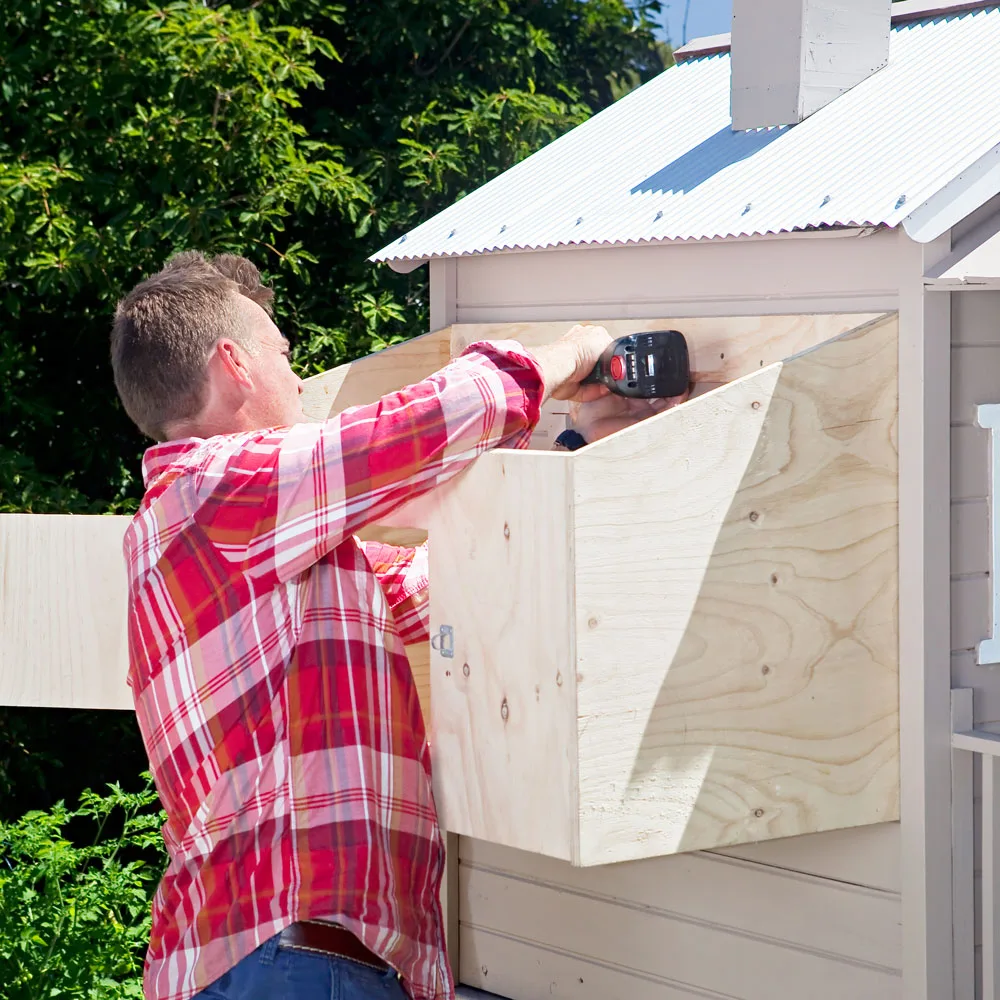
Step 10
Measure and cut roof framing to sit on top of posts, mitring corners. Screw to posts.
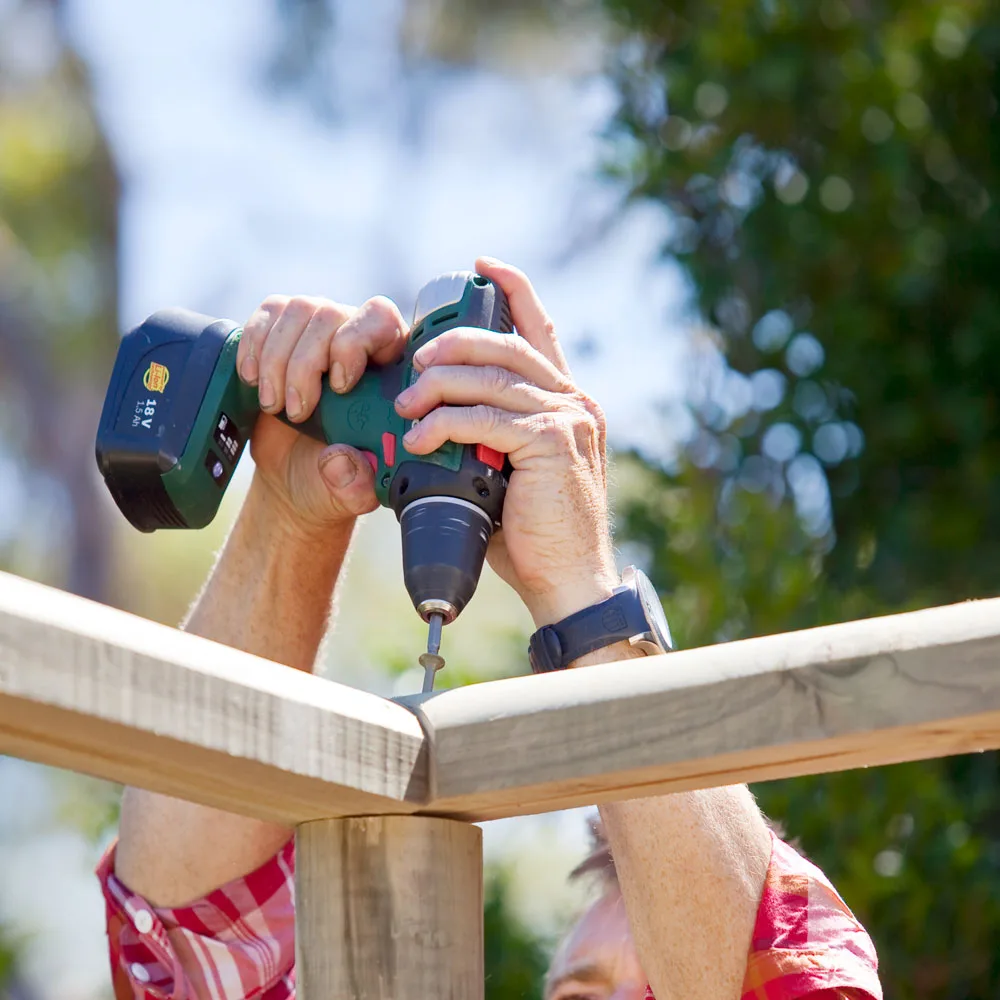
Step 11
Measure and cut extra roof framings to go between top framing to support roof, then screw to outer roof framing.
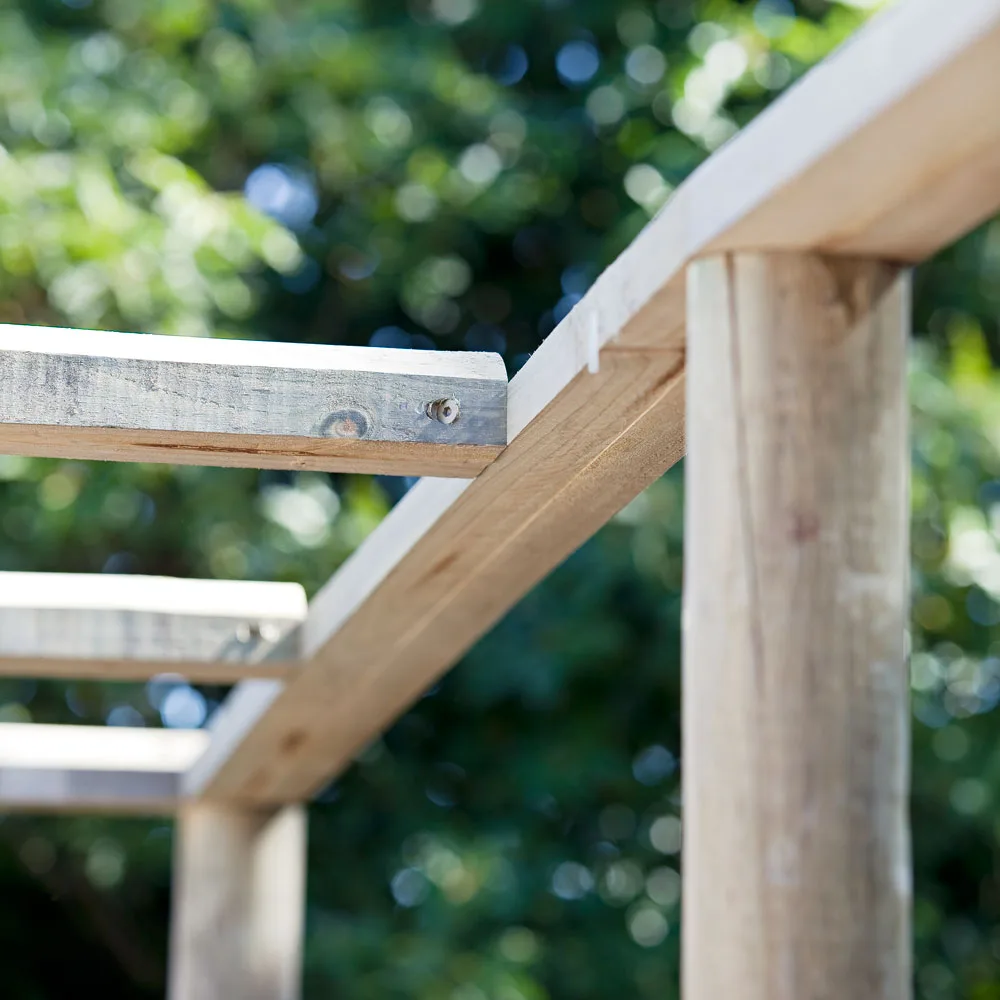
Step 12
Run mesh around lower half of posts so it sits across bottom of trench and leaves a gap for gate. Secure to posts using 25mm clouts. Cut off any excess using snips.
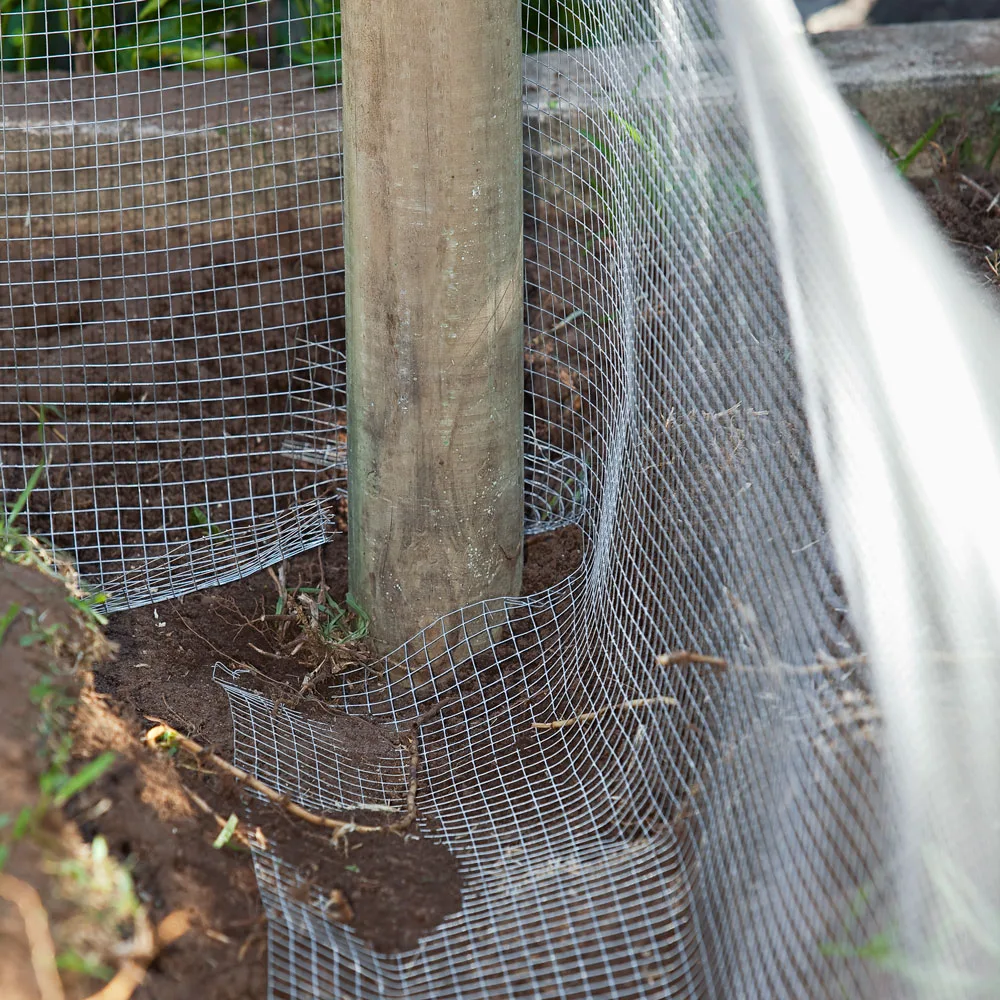
Step 13
Run another layer of mesh around upper half of posts, overlapping lower by about 100mm. Using snips and pliers, join layers. Backfill trench. Cover top of run with mesh where you don’t want roofing.
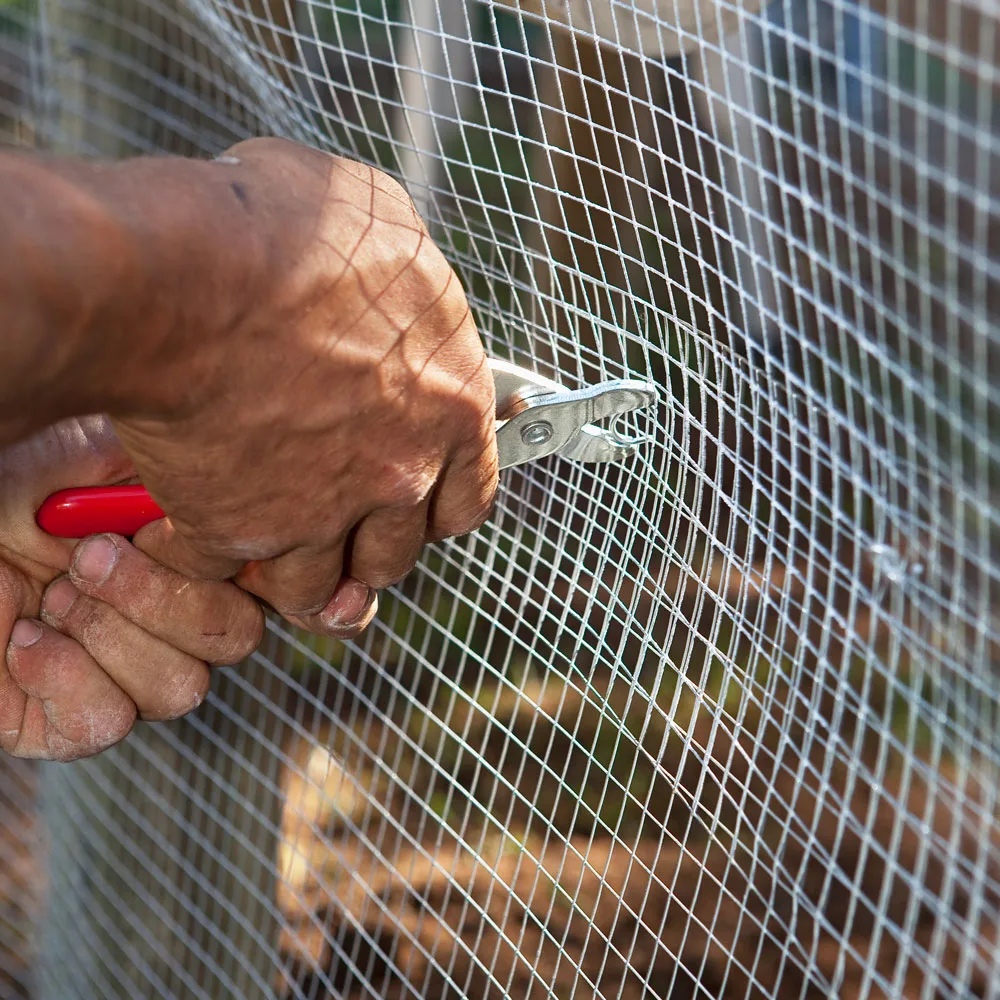
Step 14
Measure and cut polycarbonate roofing to length and place on top of frame. Overlap sheets by at least one and a half ridges. Screw through every third ridge of roof sheets into frame using polycarbonate roofing screws.
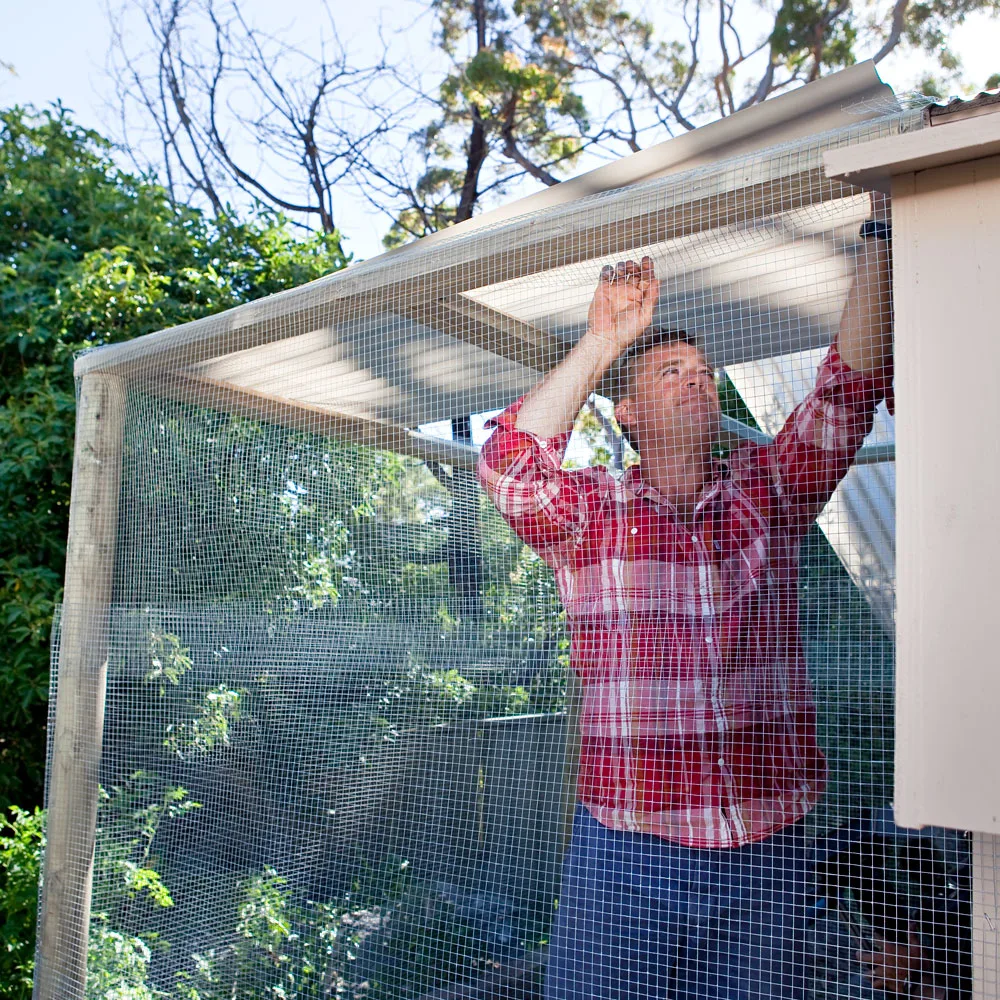
Step 15
Measure and cut gate frame pieces. Allow 10mm clearance at top and sides of frame and 40mm at bottom. Include a horizontal brace halfway up gate. Measure and cut a diagonal brace going from bottom of hinge side to latch side of horizontal brace. Cut and fix mesh to gate, then secure to post using T-hinges. Attach gate latch and spring coil so gate closes automatically. Set block capping into ground at bottom of gate.
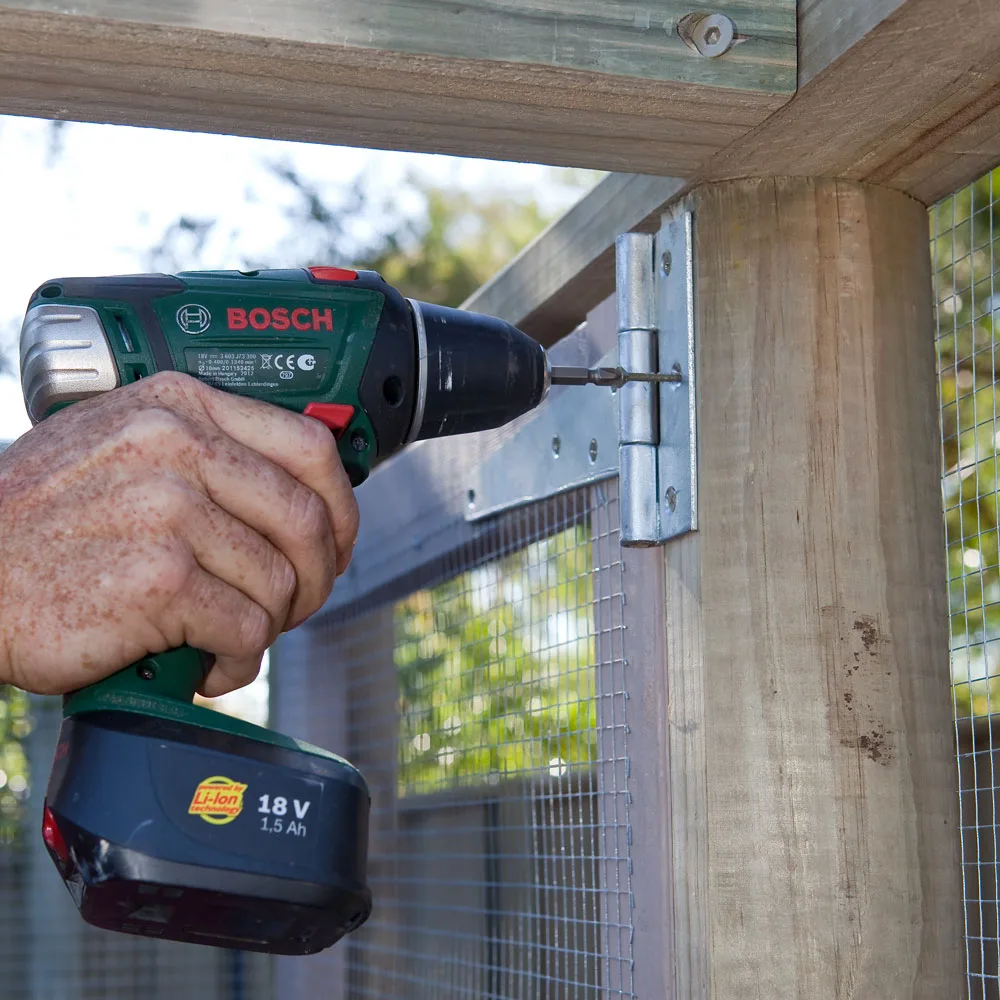
Step 16
Measure and cut ramp and rungs, allowing for 10-15mm between rungs and a width of 200-300mm. Screw rungs to ramp. Attach an offcut block to platform, then attach ramp to block.
Step 17
Spread a layer of straw around chook run, coop and nesting box. Attach food and water dispensers to side of run.
